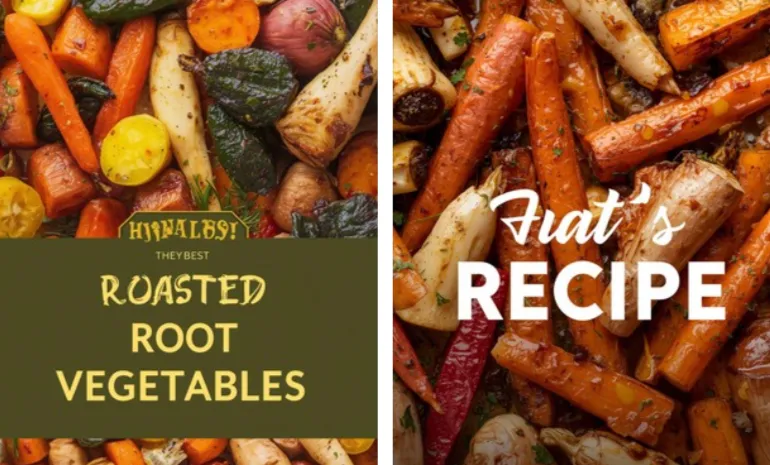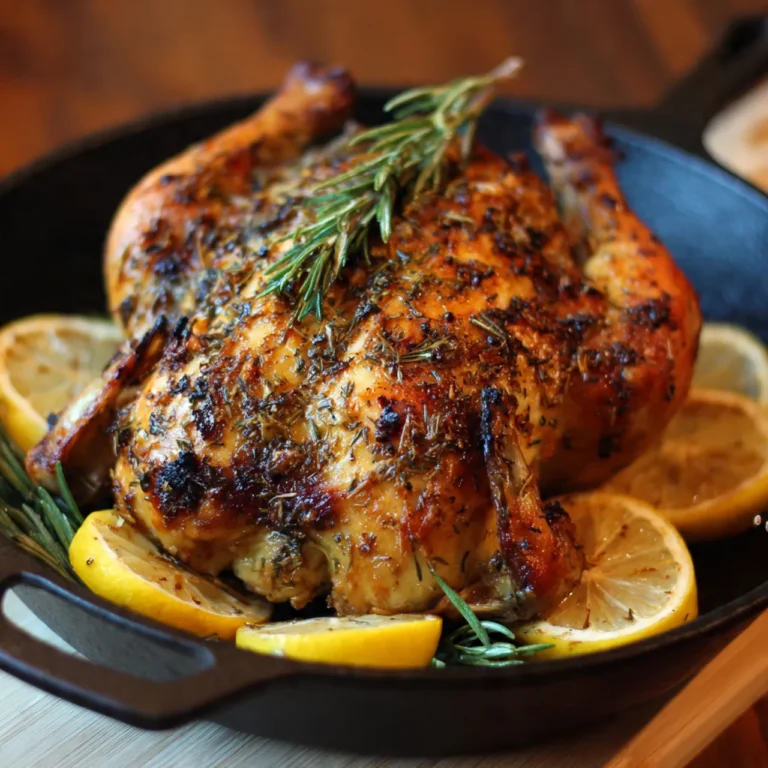There is something deeply satisfying about a tray of roasted root vegetables. Their natural sweetness, enhanced by caramelization, transforms the humble carrot, parsnip, beet, or potato into something extraordinary. Whether you’re preparing a weeknight meal, planning a festive spread, or simply looking for ways to add more seasonal produce to your diet, roasted root vegetables deserve a permanent spot in your kitchen repertoire.
In this comprehensive guide, we’ll explore everything you need to know: from the science of roasting and the best root vegetable combinations, to seasoning blends, serving ideas, and storage tips. You’ll also learn how to adapt your roasted roots for every season and dietary need—whether you’re vegan, gluten-free, or just a lover of real, wholesome food.
1. Why Roasted Root Vegetables Belong on Every Table
Roasted root vegetables have long been a cornerstone of traditional cuisines across the world. From European harvest feasts to North African tagines, root vegetables symbolize warmth, sustenance, and connection to the earth. Their versatility and nutritional value make them ideal for modern healthy cooking.
Here are a few reasons why roasted root vegetables are a timeless favorite:
a. They’re Naturally Flavorful
Root vegetables contain natural sugars that caramelize when roasted, creating complex layers of sweetness and umami. Roasting enhances their flavor far more than boiling or steaming ever could.
b. They’re Nutrient-Dense
Packed with fiber, vitamins, minerals, and antioxidants, root vegetables contribute to digestive health, immunity, and long-lasting energy. Each type of root offers unique nutritional benefits—from the beta-carotene in carrots to the folate in beets.
c. They’re Budget-Friendly
Root vegetables are among the most affordable items in the produce aisle. They store well for weeks, meaning less waste and more savings.
d. They’re Versatile
Serve them as a side dish, toss them into salads, blend them into soups, or use them as a base for grain bowls. Roasted roots adapt beautifully to countless cuisines.
2. Understanding Root Vegetables: A Quick Overview
Before diving into the roasting process, it’s important to understand what qualifies as a root vegetable and how each variety behaves in the oven.
Root vegetables are plants that grow underground and store energy in their roots or tubers. Here are the most common types for roasting:
| Vegetable | Texture | Flavor Profile | Best Pairings |
|---|---|---|---|
| Carrots | Firm | Sweet, earthy | Thyme, honey, cumin |
| Parsnips | Starchy | Nutty, mildly spicy | Rosemary, maple syrup |
| Beets | Dense | Sweet, earthy | Balsamic, orange zest |
| Sweet Potatoes | Soft | Sweet, creamy | Cinnamon, paprika |
| Turnips | Crisp | Peppery | Butter, garlic |
| Rutabagas | Firm | Mildly bitter | Sage, olive oil |
| Potatoes | Starchy | Savory | Garlic, rosemary |
| Celery Root (Celeriac) | Firm | Mild celery flavor | Mustard, lemon |
| Radishes | Juicy | Slightly spicy | Honey, dill |
Each of these vegetables reacts differently to roasting time and temperature, so combining them wisely ensures even cooking and balanced flavor.
3. The Science of Roasting: What Makes Vegetables Irresistible
Roasting works because it triggers the Maillard reaction—a chemical process that occurs when sugars and amino acids are exposed to high heat. This creates complex flavor compounds and that signature golden-brown crust.
For root vegetables, roasting also reduces moisture content, concentrating sweetness while maintaining tender interiors. The result is a textural contrast—crispy edges and creamy centers—that no other cooking method can replicate.
To achieve perfect results, three factors matter most:
- Temperature – Roast at 400°F to 425°F (200°C to 220°C).
- Air Circulation – Use a large baking sheet and avoid overcrowding.
- Oil and Seasoning – Coat evenly to promote caramelization and prevent dryness.
4. Step-by-Step Guide to Perfectly Roasted Root Vegetables
Step 1: Choose and Prepare Your Vegetables
Select a mix of at least three varieties for a balance of color, texture, and flavor. A classic combination might include carrots, parsnips, and sweet potatoes.
Wash and peel the vegetables if necessary. Cut them into uniform pieces—about 1 to 1½ inches thick—to ensure even cooking.
Step 2: Preheat and Prepare the Pan
Preheat your oven to 425°F (220°C). Line a large baking sheet with parchment paper or use a well-seasoned baking tray. Spread the vegetables in a single layer.
Step 3: Season Generously
Toss your vegetables with olive oil (or avocado oil for a higher smoke point). Add salt, pepper, and herbs of your choice. For depth, incorporate spices such as paprika, cumin, or smoked chili.
Step 4: Roast and Rotate
Roast for 25 to 40 minutes, depending on the type of vegetable. Stir halfway through to promote even browning. The vegetables are done when they are tender and caramelized around the edges.
Step 5: Finish and Serve
Add a finishing touch—a drizzle of balsamic reduction, a sprinkle of fresh herbs, or a dash of lemon juice—to bring brightness to the dish. Serve immediately for maximum crispness.
5. Flavor Combinations to Try
Experimenting with flavors is part of the fun. Here are a few winning combinations that showcase the versatility of roasted roots:
a. Classic Herb Blend
- Olive oil, rosemary, thyme, garlic, sea salt, and cracked pepper
- Perfect for potatoes, carrots, and parsnips
b. Sweet and Spicy Glaze
- Maple syrup, cayenne pepper, cinnamon, and olive oil
- Excellent for sweet potatoes and beets
c. Mediterranean Style
- Olive oil, oregano, lemon zest, and feta cheese crumbles
- Works beautifully with turnips, carrots, and potatoes
d. North African-Inspired
- Cumin, coriander, paprika, and harissa paste
- Ideal for carrots, parsnips, and rutabagas
e. Asian-Inspired Umami
- Soy sauce, sesame oil, ginger, and a touch of honey
- Best with sweet potatoes and daikon radishes
6. The Nutritional Powerhouse: Health Benefits of Root Vegetables
Root vegetables are often underestimated in modern diets, but they are among the most nutrient-rich foods available.
a. High in Fiber
They promote digestive health, stabilize blood sugar levels, and keep you feeling full longer.
b. Rich in Antioxidants
Beets and carrots, in particular, are high in antioxidants that help combat oxidative stress and inflammation.
c. Excellent Source of Vitamins and Minerals
Carrots provide vitamin A, potatoes offer potassium, and parsnips deliver folate and vitamin C—all essential for immune function and energy metabolism.
d. Natural Energy Boosters
Their slow-releasing carbohydrates make them perfect for athletes, students, and anyone seeking sustained energy.
7. Common Mistakes and How to Avoid Them
Even simple recipes can go wrong if a few details are overlooked. Here’s what to avoid:
| Mistake | Why It Happens | Solution |
|---|---|---|
| Overcrowding the pan | Steam builds instead of roasting | Use two trays or larger pan |
| Uneven cutting | Some pieces overcook | Cut all vegetables into similar sizes |
| Not enough oil | Dry texture, poor caramelization | Coat lightly but evenly |
| Low oven temperature | Soft, soggy vegetables | Keep temperature above 400°F |
| No stirring | Uneven browning | Stir halfway through cooking |
8. Seasonal Twists and Serving Ideas
Roasted root vegetables can be adapted year-round with seasonal ingredients and flavors.
a. Autumn and Winter
- Pair with roasted meats or serve in grain bowls.
- Add a drizzle of maple syrup and sprinkle of nutmeg for a cozy flavor.
b. Spring
- Mix roasted roots with spring greens and goat cheese.
- Finish with lemon vinaigrette for brightness.
c. Summer
- Serve cold as part of a picnic salad with a yogurt-tahini dressing.
9. How to Store and Reheat Roasted Root Vegetables
Roasted roots store remarkably well, making them a great meal-prep option.
- Refrigeration: Store in an airtight container for up to 5 days.
- Freezing: Freeze in a single layer before transferring to a freezer-safe bag. They last up to 3 months.
- Reheating: Reheat in a hot oven (400°F) for 10–15 minutes to regain crispiness. Avoid microwaving, which softens the texture.
10. Pairing Roasted Root Vegetables with Other Dishes
Here are some meal ideas to turn your roasted vegetables into complete dishes:
- With Protein: Serve alongside roasted chicken, grilled salmon, or baked tofu.
- In Salads: Combine cold roasted beets and carrots with arugula, walnuts, and goat cheese.
- In Bowls: Layer quinoa, roasted vegetables, chickpeas, and tahini dressing.
- In Soups: Blend leftover roasted roots into vegetable broth for a velvety soup.
- In Wraps or Tacos: Use as a filling with avocado and a drizzle of yogurt-lime sauce.
11. Roasted Root Vegetables Recipe (Base Version)
Ingredients:
- 2 carrots, peeled and chopped
- 2 parsnips, peeled and chopped
- 2 sweet potatoes, peeled and cubed
- 2 tablespoons olive oil
- 1 teaspoon salt
- ½ teaspoon black pepper
- 1 teaspoon dried rosemary or thyme
Instructions:
- Preheat oven to 425°F (220°C).
- In a large bowl, toss the vegetables with olive oil, salt, pepper, and herbs.
- Spread evenly on a parchment-lined baking sheet.
- Roast for 35 minutes, stirring halfway through.
- Serve warm, topped with fresh parsley or lemon zest if desired.
12. Variations to Explore
a. Honey-Balsamic Glaze
Whisk together 2 tablespoons balsamic vinegar, 1 tablespoon honey, and 1 tablespoon olive oil. Drizzle over roasted vegetables during the last 10 minutes of cooking.
b. Spiced Harissa Roots
Toss vegetables in 1 tablespoon harissa paste and 1 teaspoon smoked paprika before roasting for a bold, smoky kick.
c. Garlic Parmesan Finish
After roasting, toss vegetables with minced garlic, grated Parmesan cheese, and chopped parsley for an Italian twist.
13. Sustainability and Local Sourcing
Root vegetables are naturally sustainable. They require less water, grow in cooler climates, and can be stored for long periods—reducing food waste. Buying from local farmers also supports sustainable agriculture and reduces transportation emissions.
If you have a home garden, roots like carrots, beets, and turnips are among the easiest crops to grow and store through the winter.
14. Dietary Adaptations
Roasted root vegetables suit almost any dietary preference:
- Vegan/Vegetarian: Naturally plant-based and nutrient-dense.
- Gluten-Free: Contain no gluten and pair perfectly with gluten-free grains.
- Paleo and Whole30: Ideal for clean eating plans that emphasize whole, unprocessed foods.
You can easily adjust seasonings to align with your flavor or health goals—using coconut oil for paleo diets or avocado oil for high-heat cooking.
15. Conclusion: Simple, Seasonal, and Unforgettable
Roasted root vegetables are more than just a side dish—they’re a celebration of simplicity, flavor, and nourishment. With minimal ingredients and a bit of heat, you can transform basic produce into something extraordinary. Their adaptability across cuisines, affordability, and health benefits make them one of the most rewarding dishes to master.






